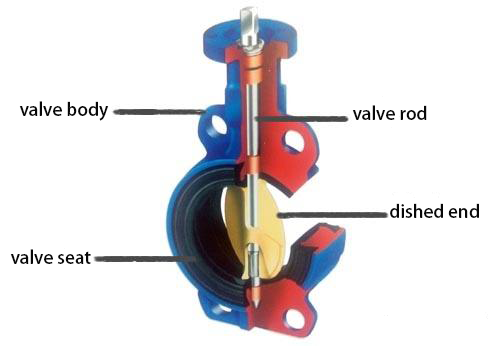 English
English 简体中文
简体中文  Esperanto
Esperanto  Afrikaans
Afrikaans  Català
Català  שפה עברית
שפה עברית  Cymraeg
Cymraeg  Galego
Galego  繁体中文
繁体中文  Latviešu
Latviešu  icelandic
icelandic  ייִדיש
ייִדיש  беларускі
беларускі  Hrvatski
Hrvatski  Kreyòl ayisyen
Kreyòl ayisyen  Shqiptar
Shqiptar  Malti
Malti  lugha ya Kiswahili
lugha ya Kiswahili  አማርኛ
አማርኛ  Bosanski
Bosanski  Frysk
Frysk  ភាសាខ្មែរ
ភាសាខ្មែរ  ქართული
ქართული  ગુજરાતી
ગુજરાતી  Hausa
Hausa  Кыргыз тили
Кыргыз тили  ಕನ್ನಡ
ಕನ್ನಡ  Corsa
Corsa  Kurdî
Kurdî  മലയാളം
മലയാളം  Maori
Maori  Монгол хэл
Монгол хэл  Hmong
Hmong  IsiXhosa
IsiXhosa  Zulu
Zulu  Punjabi
Punjabi  پښتو
پښتو  Chichewa
Chichewa  Samoa
Samoa  Sesotho
Sesotho  සිංහල
සිංහල  Gàidhlig
Gàidhlig  Cebuano
Cebuano  Somali
Somali  Тоҷикӣ
Тоҷикӣ  O'zbek
O'zbek  Hawaiian
Hawaiian  سنڌي
سنڌي  Shinra
Shinra  Հայերեն
Հայերեն  Igbo
Igbo  Sundanese
Sundanese  Lëtzebuergesch
Lëtzebuergesch  Malagasy
Malagasy  Yoruba
Yoruba  Español
Español  Português
Português  русский
русский  Français
Français  日本語
日本語  Deutsch
Deutsch  tiếng Việt
tiếng Việt  Italiano
Italiano  Nederlands
Nederlands  ภาษาไทย
ภาษาไทย  Polski
Polski  한국어
한국어  Svenska
Svenska  magyar
magyar  Malay
Malay  বাংলা ভাষার
বাংলা ভাষার  Dansk
Dansk  Suomi
Suomi  हिन्दी
हिन्दी  Pilipino
Pilipino  Türkçe
Türkçe  Gaeilge
Gaeilge  العربية
العربية  Indonesia
Indonesia  Norsk
Norsk  تمل
تمل  český
český  ελληνικά
ελληνικά  український
український  Javanese
Javanese  فارسی
فارسی  தமிழ்
தமிழ்  తెలుగు
తెలుగు  नेपाली
नेपाली  Burmese
Burmese  български
български  ລາວ
ລາວ  Latine
Latine  Қазақша
Қазақша  Euskal
Euskal  Azərbaycan
Azərbaycan  Slovenský jazyk
Slovenský jazyk  Македонски
Македонски  Lietuvos
Lietuvos  Eesti Keel
Eesti Keel  Română
Română  Slovenski
Slovenski  मराठी
मराठी  Srpski језик
Srpski језик
Butterfly valve structure and working principle
2024-11-04
Butterfly valve structure and working principle
Butterfly valve is a kind of valve that uses the round butterfly plate as the opening and closing part and rotates with the valve stem to open, close and adjust the fluid channel. There are many types of butterfly valves, widely used, and it is also the longest valve type we see on the pipeline every day.

Butterfly valve has the characteristics of simple structure, small size, light weight, material consumption, small installation size, quick switching, 90° reciprocating rotation, small driving torque, etc., used to cut off, connect, adjust the medium flow in the pipeline, with good fluid control characteristics and close sealing performance.
Butterfly valve butterfly plate flow design, fluid resistance loss is small.
The stem of butterfly valve is a through rod structure, after tempering treatment, has good comprehensive mechanical properties and corrosion resistance, abrasion resistance. When the butterfly valve is opened and closed, the valve stem only rotates without lifting and lifting operation, and the packing of the valve stem is not easy to damage and the seal is reliable.
The butterfly valve is connected by flange connection, clamp connection, butt welding connection and lug clamp connection. The driving forms are manual, worm gear transmission, electric, pneumatic, hydraulic, electro-hydraulic linkage and other actuators, which can realize remote control and automatic operation.
Working principle of butterfly valve
The butterfly valve is a circular butterfly plate as the opening and closing part to open and close and adjust the medium flow valve in the pipeline, in the butterfly valve body cylindrical channel, the disc disc rotates around the axis, the rotation Angle is between 0°~90°, when the rotation to 90°, the butterfly valve is in a fully open state.
The relationship between the opening of the butterfly valve and the flow rate is basically linear proportional. If it is used to control the flow, its flow characteristics are also closely related to the flow resistance of the piping, such as the valve diameter and form of the two pipelines are all the same, and the pipeline loss coefficient is different, and the flow of the valve will be very different.
If the valve is in a large throttle range state, the back of the valve plate is prone to cavitation, and there is the possibility of damage to the valve, which is generally used at 15°.
When the butterfly valve is in the middle opening, the opening shape formed by the valve body and the front end of the butterfly plate is centered on the valve shaft, and the two sides form different states. The front end of the butterfly plate on one side moves in the direction of the flowing water, and the other side moves in the direction of the countercurrent water. Therefore, the valve body on one side forms a nozzle-shaped opening with the valve plate, and the other side is similar to the orifice shaped opening. The throttle side of the valve will produce negative pressure, often appear rubber seals fall off.
Butterfly valve operating torque, due to the opening degree and the valve opening and closing direction of different values, horizontal butterfly valve, especially large diameter valve, due to the water depth, valve shaft, the moment generated by the head difference can not be ignored. In addition, when the inlet side of the valve is equipped with a bend, the bias is formed, and the torque will increase. When the valve is in the middle opening, the operating mechanism needs to self-lock due to the action of the water flow torque.
When the butterfly valve is in the fully open position, the thickness of the butterfly plate is the only resistance when the medium flows through the valve body, so the pressure drop generated by the valve is small, so it has better flow control characteristics.
Phone/whatsapp/Wechat:+86 15610189448




